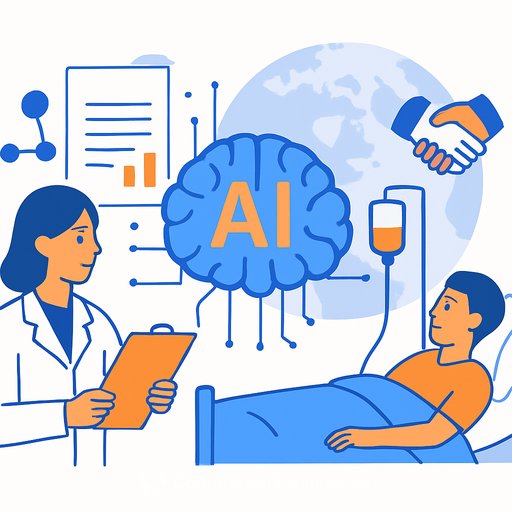AI's next frontier: Turning Asia's life sciences research power into global health impact
AI is set to change healthcare by scaling diagnostics, improving trial design, and compressing timelines from bench to bedside. The Economist projects AI's healthcare market value could reach $34.5 billion by 2027-around eight times 2020 levels. But if expertise clusters in a few places, models and protocols risk being tuned to narrow populations and workflows. That means inequitable performance and slower translation in regions with different data, infrastructure, and clinical realities.
Asia's rise as a research engine
Asia now leads the world in AI life sciences publications. A big driver is China, which produced over half of Asia's output from 2000 to 2022 and surpassed the U.S. in annual volume in 2020. China and the U.S. together account for roughly 44% of global publications in this space-more than 170,000 papers-supported by deep talent pools and sustained funding.
National strategies and large infrastructure bets have accelerated output. Yet a lower rate of international collaboration in parts of Asia may limit downstream influence, especially in top-tier venues and clinical uptake.
Why international collaboration matters
An analysis of 397,967 AI life science studies (2000-2022) and 14.5 million citations shows a clear pattern: cross-border teams produce more influential work. Articles with international co-authors receive, on average, 21% more citations from general life science articles and 7% more from clinical research, and are 35% more likely to appear in high-ranking journals. That visibility boosts replication, guideline inclusion, and real-world use.
Here's the catch: only 16% of Asia-led AI life science publications involve international co-authors, compared with over 30% in Africa and Oceania, over 20% in Europe and Latin America, and 18% in North America. The result is a volume lead without the same level of recognition and clinical ripple effect seen in North America and Europe.
Study: International collaboration boosts impact
Perspective: Cross-border cooperation in healthcare AI
What researchers and R&D leaders can do now
- Build balanced consortia: Co-lead projects across regions. Include sites from low- and middle-income countries early, not as an afterthought. Align milestones, authorship, and data contributions from day one.
- Share data without moving it: Use federated learning and secure multiparty computation to respect data sovereignty while training across borders. Document model cards and bias audits for each site.
- Standardize the plumbing: Agree on ontologies (e.g., SNOMED CT/ICD), multilingual term mapping, file formats, and provenance. Adopt FAIR data practices and persistent identifiers for datasets, code, and models.
- Tighten governance: Set up reciprocal IRB/ethics workflows, common DUA templates, and clear data access tiers. Pre-register protocols, publish negative results, and maintain reproducible pipelines.
- Design for generalization: Power studies for external validation across at least three regions, with stratified performance for age, sex, ethnicity, and comorbidities. Report failure modes, not just AUCs.
- Publication strategy: Target journals with clinical readership and strong methods standards. Pair submissions with preprints, open code, and replication packages to accelerate scrutiny.
- Fund the "glue" work: Budget for coordination, translation, data engineering, and legal review. Seek binational grants and philanthropic funding that reward shared infrastructure and open science.
- Upskill teams: Train clinical and data staff in MLOps, privacy-preserving analytics, and evaluation on multi-site cohorts. If you need structured pathways, see curated AI courses by role at Complete AI Training.
- Evaluate beyond metrics: Track downstream use-dataset reuse, external validations, regulatory submissions, and clinical decisions influenced-not just citation counts.
Policy moves that raise the ceiling
- Incentivize cross-border outputs: Make promotions and grants value international co-authorship, shared datasets, and open-source tooling.
- Lower collaboration friction: Fast-track research visas, fund shared compute, and provide legal toolkits for cross-border data governance.
- Benchmark globally: Require multi-country test sets for public funding and procurement of clinical AI systems.
The outcome that matters
Asia's research engine is running hot and will keep accelerating as funding and talent deepen. To translate that volume into healthier patients worldwide, the next move is clear: expand international collaboration, validate across diverse populations, and make methods and data reusable.
Do that, and the field moves faster, with findings that travel well-from lab to clinic, and from one health system to many.
Your membership also unlocks:






